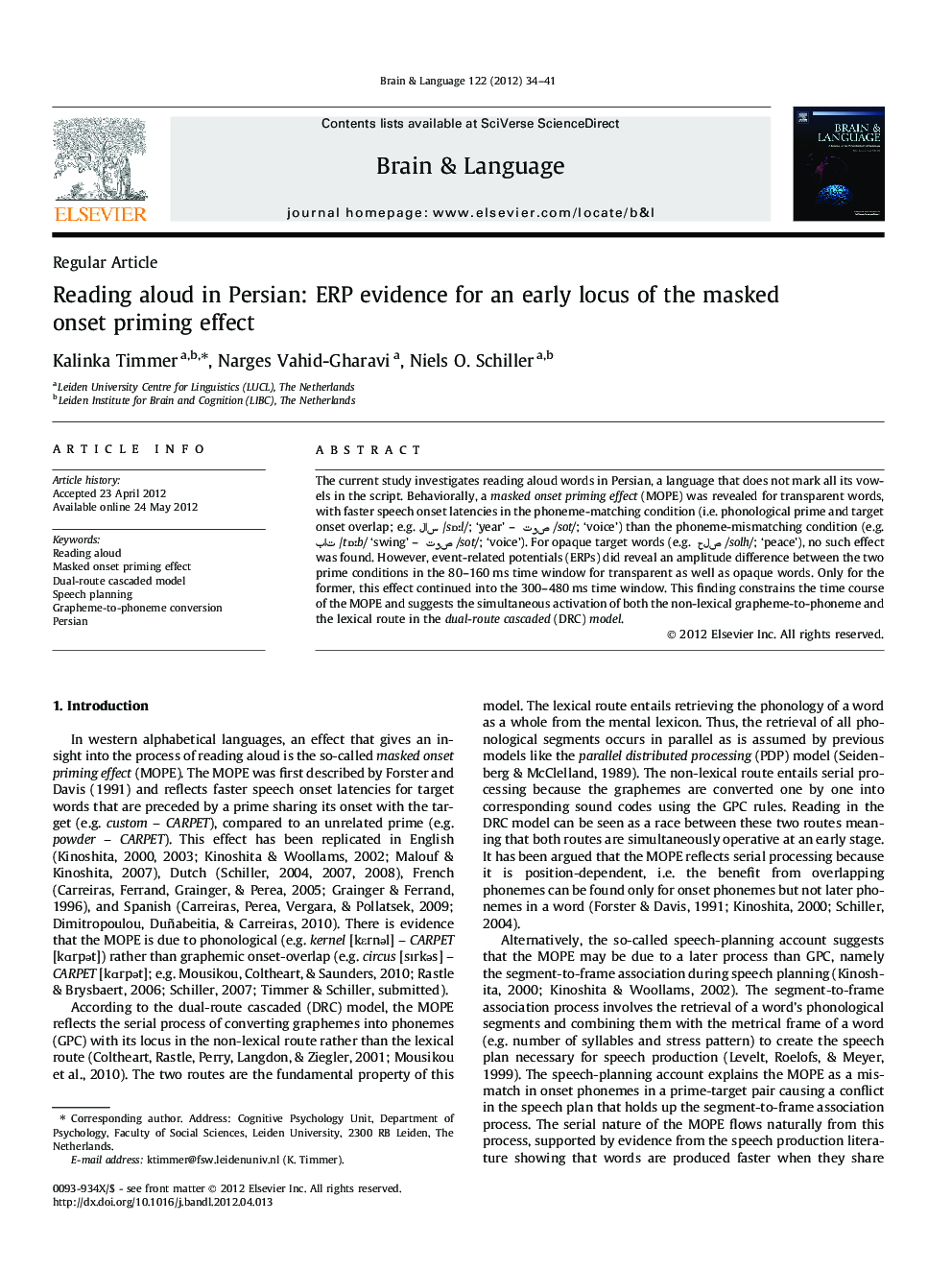| کد مقاله | کد نشریه | سال انتشار | مقاله انگلیسی | نسخه تمام متن |
|---|---|---|---|---|
| 925459 | 921495 | 2012 | 8 صفحه PDF | دانلود رایگان |

The current study investigates reading aloud words in Persian, a language that does not mark all its vowels in the script. Behaviorally, a masked onset priming effect (MOPE) was revealed for transparent words, with faster speech onset latencies in the phoneme-matching condition (i.e. phonological prime and target onset overlap; e.g. سال /sɒːl/; ‘year’ – صوت /sot/; ‘voice’) than the phoneme-mismatching condition (e.g. تاب /tɒːb/ ‘swing’ – صوت /sot/; ‘voice’). For opaque target words (e.g. صلح /solh/; ‘peace’), no such effect was found. However, event-related potentials (ERPs) did reveal an amplitude difference between the two prime conditions in the 80–160 ms time window for transparent as well as opaque words. Only for the former, this effect continued into the 300–480 ms time window. This finding constrains the time course of the MOPE and suggests the simultaneous activation of both the non-lexical grapheme-to-phoneme and the lexical route in the dual-route cascaded (DRC) model.
► Brain activation during reading aloud is investigated for the first time.
► We compared models of reading to account for pattern of activation during reading.
► Behavioral data show phonological activation for regular but not irregular words.
► EEG shows phonological activation for both word types 80 ms after target presentation.
► We suggest an early locus of phonological activation supporting one of the models.
Journal: Brain and Language - Volume 122, Issue 1, July 2012, Pages 34–41